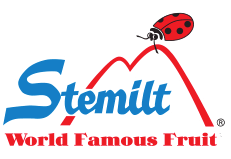Why We Plant Wildflowers Near Organic Orchards
|
Here at Stemilt, we’re always working towards finding organic ways to manage our orchards. We use my father’s world famous compost to feed the trees natural nutrients, and we use micro irrigation methods to water and feed many trees in order to maximize the delivery of these necessities to our trees. But, did you also know we use wildflowers to help on our organic farms? There are dozens of wildflowers native to Washington State that we use in the field. Many of our organic orchards have beautiful wildflowers lining the edges of apple orchards as a way to attract and harbor beneficial insects to orchards.
While some of these wildflowers are found naturally near our orchards, other locations like Capstone located in Mattawa, WA, require the wildflowers to be planted intentionally in order to reap the benefits. Lavender, sunflowers, lemon mint, and wild lupine are among the 27 different varieties planted around these orchards. At our Capstone Orchard there are three large 20-foot edges spanning two miles total of wildflowers, with more in the works. Since these wildflowers may line an orchard that could become organic, Stemilt uses two semi-retired team members to pull weeds by hand and care for the wildflower rows. Their maintenance helps our flowers live their fullest lives. When one flower has completed its life cycle, another will start theirs, resulting in a beautiful cycle of colorful flowers throughout the growing season.
If you think your kiddo is hilarious, you NEED to enter this contest for your chance to win BIG.
All of these wildflowers attract beneficial insects to the orchards, including one of the most important insects for our world: bees. Bees are crucial in pollination as they are responsible for ensuring the blossoms are fertilized so we can grow world famous fruit. The wildflowers also invite other useful insects in, including predator insects. Predator insects are crucial in orchards as they help with pest management and keep damaging bugs at bay. My grandfather, Tom Mathison, introduced what’s known as integrated pest management to Stemilt back in 1989 as a way to combat pesky bugs naturally when he first began transitioning large amounts of acreage to organic. This movement became part of my grandfather’s sustainability program, Responsible Choice®, which we still apply when farming today.
Predator insects, like lacewing, predatory wasps, and praying mantis are all welcome in our orchards. Ladybugs are also a welcomed guest and are quite popular in the wildflower rows. All of these beneficial insects act as one of the first lines of defense for our fruit, allowing us to build a diverse ecosystem and produce high quality, flavorful pieces of organic fruit.
As we continue to transition more fruit to organic, keep your eyes peeled for wildflowers in the field. They are one of the most useful, simple and beautiful tools we use today to help us provide you with flavorful pieces of Artisan Organics™ fruit!
